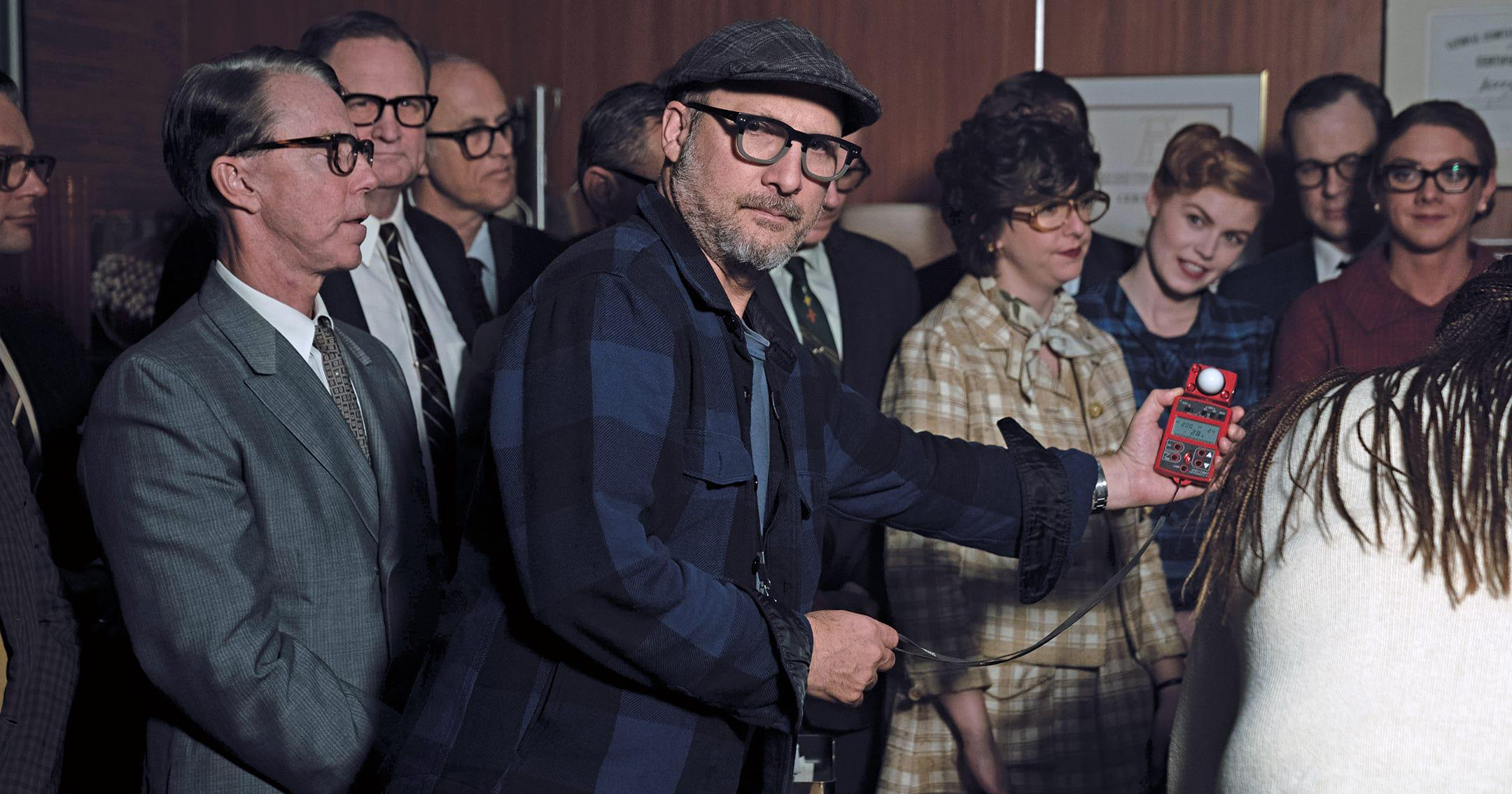
Professional Ascent: Kramer Morgenthau, ASC
The cinematographer discusses the path that led to his two recent features, The Many Saints of Newark and Respect.
The cinematographer discusses the path that led to his two recent features, The Many Saints of Newark and Respect.

By Nicolas Rapold
Respect stills by Quantrell D. Colbert, courtesy of MGM. The Many Saints of Newark stills by Barry Wetcher, SMPSP, courtesy of Warner Bros.
ASC member Kramer Morgenthau has made his creative mark on two features released this year: Respect and The Many Saints of Newark. These period productions both entrusted the cinematographer with helping to visualize beloved legacies — in Respect, the life and soul-stirring work of legendary singer Aretha Franklin, and in Many Saints, the mob-family saga of the canonical HBO television series The Sopranos. The assignments posed no small task: lending each film a sense of heart, with a fresh eye, while honoring the complexity and depth of the material.
Revisiting the Family
The Many Saints of Newark is a prequel to the series that shows future crime boss Tony Soprano (played as a child by William Ludwig and as a teen by Michael Gandolfini, son of the late Sopranos star James Gandolfini) growing up in the 1960s and ’70s alongside younger versions of other characters from the show. Central to the film is Tony’s uncle Dickie Moltisanti (Alessandro Nivola), and we also meet other characters we haven’t seen before, including Dickie’s ambitious “runner,” Harold (Leslie Odom Jr.), and Giuseppina (Michela De Rossi), the recently immigrated Italian wife of Dickie’s father, Hollywood Dick (Ray Liotta).
“[Kramer] has the skills of a great craftsman, the spirit of a musician, and the soul of an artist. He is a mensch and a joy to work with.”
— director Alan Taylor
Morgenthau had watched The Sopranos when it aired, but making a feature film set in the same world was an entirely new proposition. “I watched the show again while I was prepping, to live and breathe it, surrounded by these characters,” Morgenthau says from Boston, where he’s shooting the Christmas musical Spirited with Will Ferrell, Ryan Reynolds and Octavia Spencer.
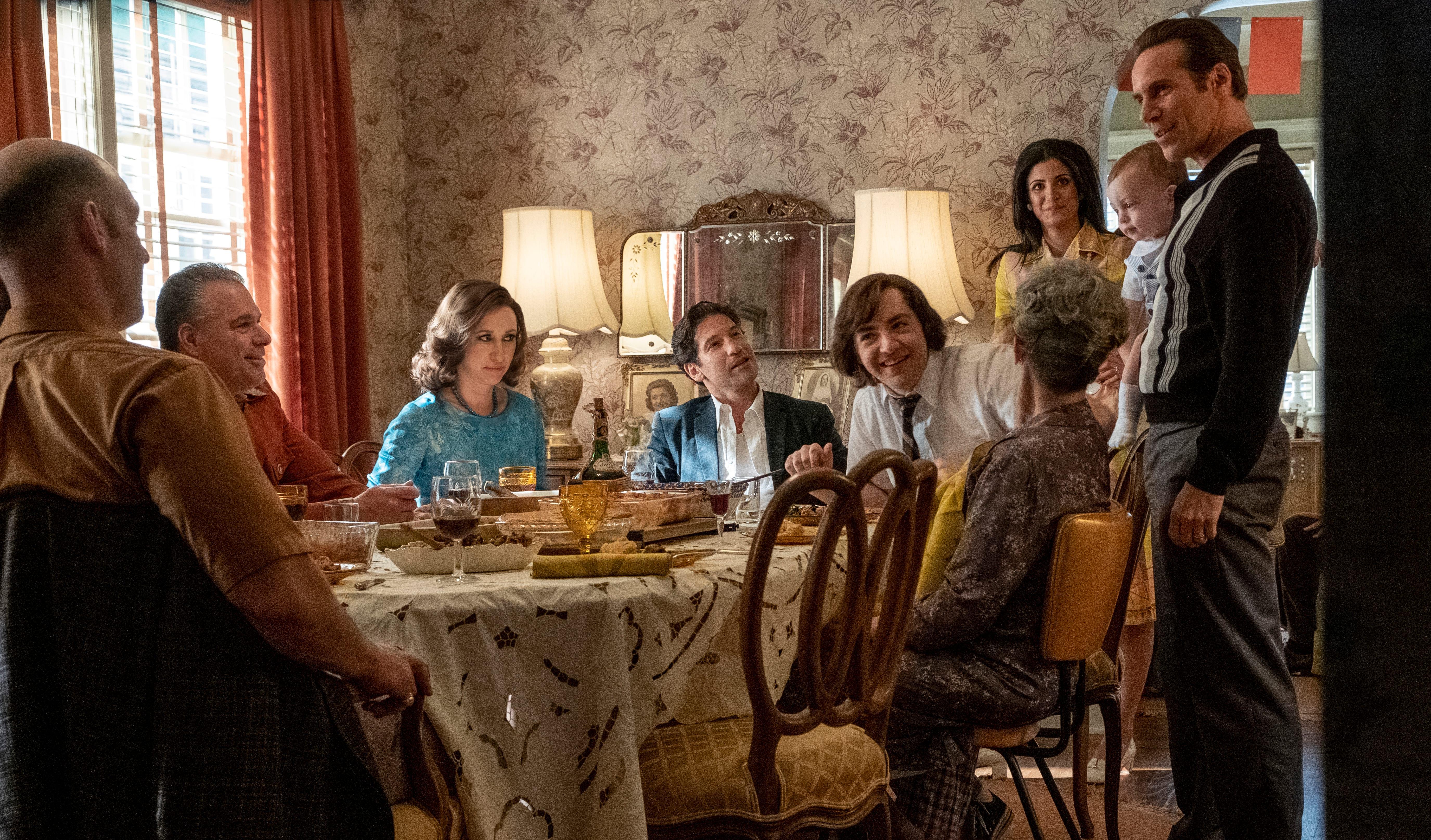
In framing a prequel about the notorious fictional family, Morgenthau didn’t want to rehash a “traditional gangster” look. “As tempting as that was, I felt like it would have made the film more about photography than character, mood, vibe and ambience,” he says. “I went for more silky blacks, more ambient top lighting, and single-source lighting, but in a nuanced and subtle way, expressing myself more with color and texture.” The story’s New Jersey setting was re-created mostly in New York’s five boroughs but called for a lot of what you might call ‘local color’: “I used a lot of this color that we nicknamed ‘Jersey Yellow,’ as well as a ‘Soprano Green.’ These colors were created using code values on the Arri SkyPanel S60.” Morgenthau shot on the Alexa LF with Panavision T Series lenses, but “optimized to feel like an older set of 1960s lenses.”
Taylor says, “I became aware of Kramer’s work on Boardwalk Empire, though we never worked on an episode together. I later directed a pilot and dragged him along; then we did Game of Thrones together. And that’s where he got his nickname: Lord of Light. It’s stuck with him and for good reason. He has the skills of a great craftsman, the spirit of a musician, and the soul of an artist. He is a mensch and a joy to work with. My only regret is that word has gotten out. He’s become hard to get!”
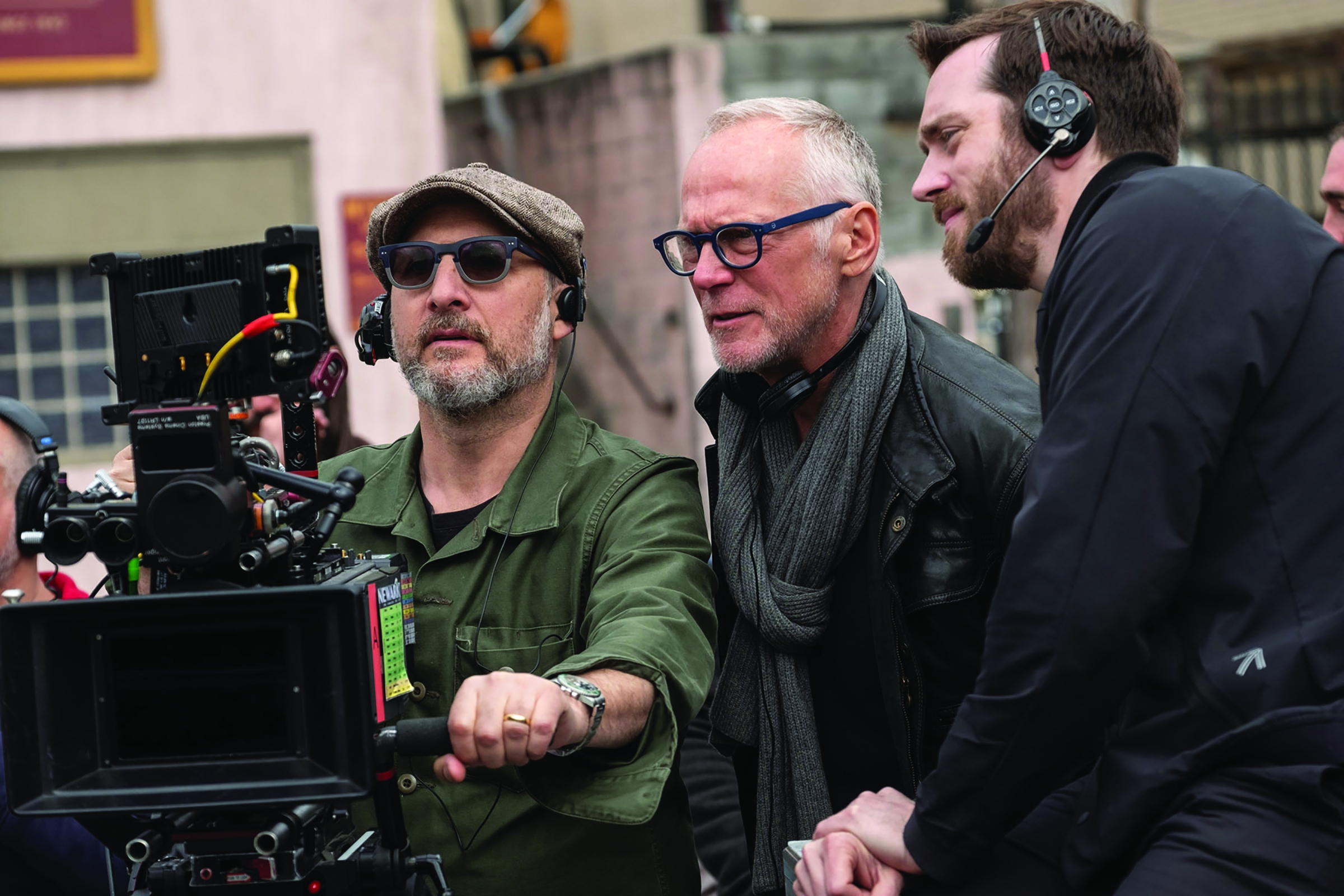
On Many Saints, Taylor was very involved in shot design and storyboarding, as Morgenthau observes: “Characters are often isolated in space, shown from behind in silhouette, to convey some of the alienation and moral ambivalence that they’re feeling.
“We would do the wide shots very composed on a dolly or crane, and then shoot a lot of the coverage handheld or on A-camera operator Mike Heathcote’s Steadicam to make it feel more like you’re in the room with the characters — a bit more immersive and a little less formal.”
The movie’s action unfolds in and around the Moltisanti house, mob meeting spots and assorted Newark haunts. A striking recurring scene takes place in a prison visiting room, where Dickie visits his uncle — played by Liotta in a double role as Hollywood Dick’s twin brother, Sal, who’s serving a long stretch. As Dickie recounts a litany of violent and tragic “mishaps” that plague his life, Sal listens with intense focus — and an air of skepticism. “It’s a device similar to the therapy scenes [between Tony Soprano and Dr. Melfi] in the original show,” Morgenthau says, adding that the prison scenes, staged at a school basement in the Bronx, were shot at different times of day to lend Liotta’s character an ethereal, almost ghostly presence in the light. We lit each sequence differently, but mostly through the windows with a series of Arri M40 HMIs, sometimes with hard light and sometimes turning them off and using the natural ambience.”
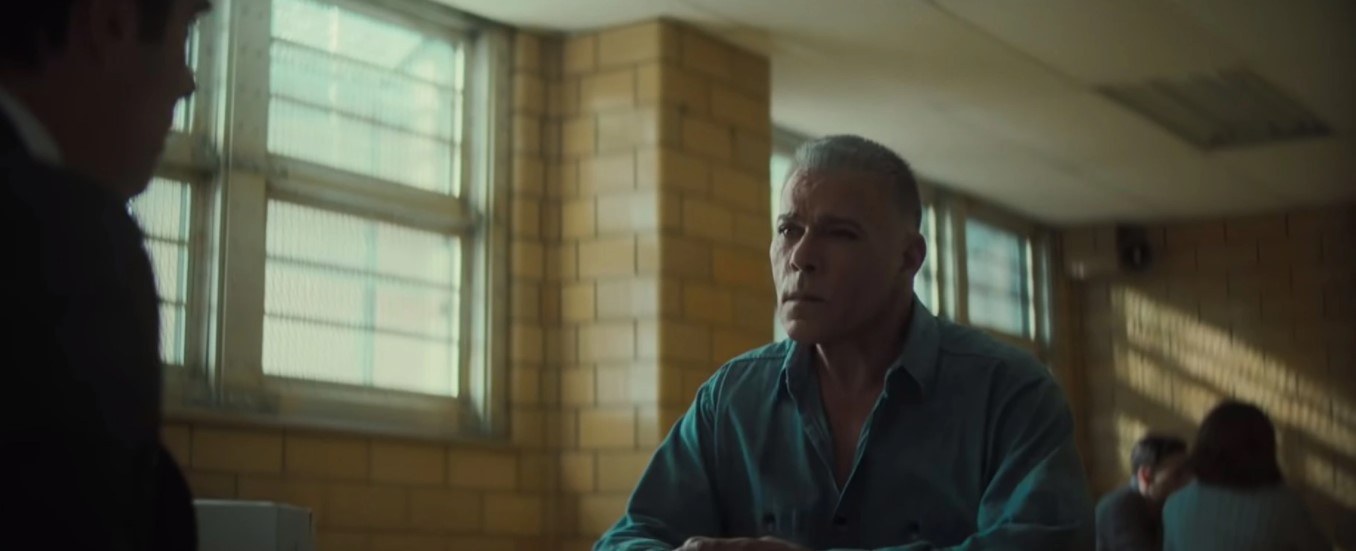
The portrayal and processing of violence was a central concern of the original TV show, and Many Saints reflects the same themes. Morgenthau says the film’s tense and elaborate shootout, storyboarded by Taylor, was one of the most challenging sequences to capture: “It’s kind of a cat-and-mouse sequence involving Dickie and Harold. There are drive-by shootings, car crashes, this guy gets shot, that guy gets shot, all with different eyelines.” The elaborate sequence checked multiple boxes for difficulty: a night exterior at a real location, blocked and staged on a shut-down street in the middle of a city, moving from exterior to interior settings, pivoting on a moment when one character switches off the lights. To ease the burden, Morgenthau says, “We built lighting into the art direction with the production designer, Bob Shaw.” The sequence won praise from one prominent fan. “It was phenomenal, really,” series creator David Chase says of the shootout. “They did a great job. As I recall, I don’t think that Harold — Leslie — even had blanks in his gun. He just jerked the shotgun, like kids playing games.”
Morgenthau describes Chase as both the film’s “tone master” and “story guru,” noting that Chase had an aura of authority based on his writing chops and his firsthand familiarity with Newark’s culture during the story’s time periods.
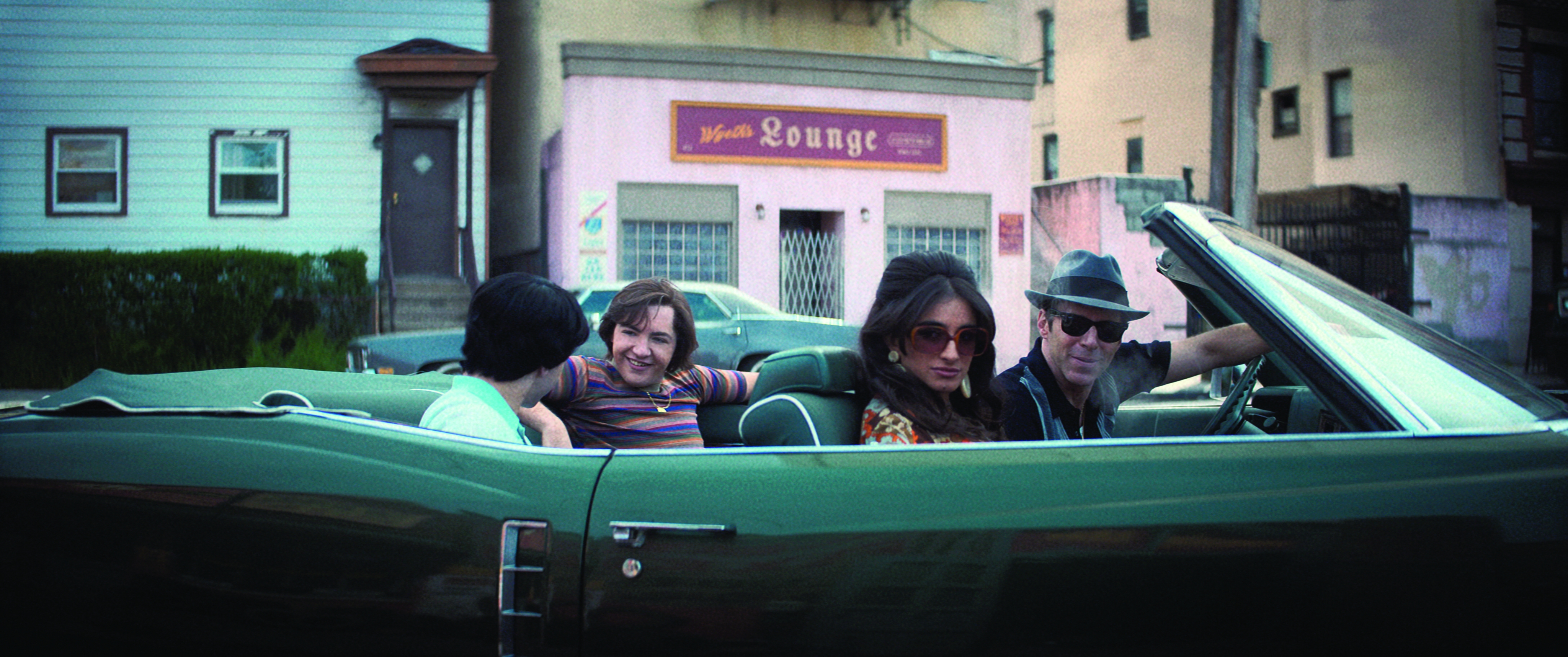
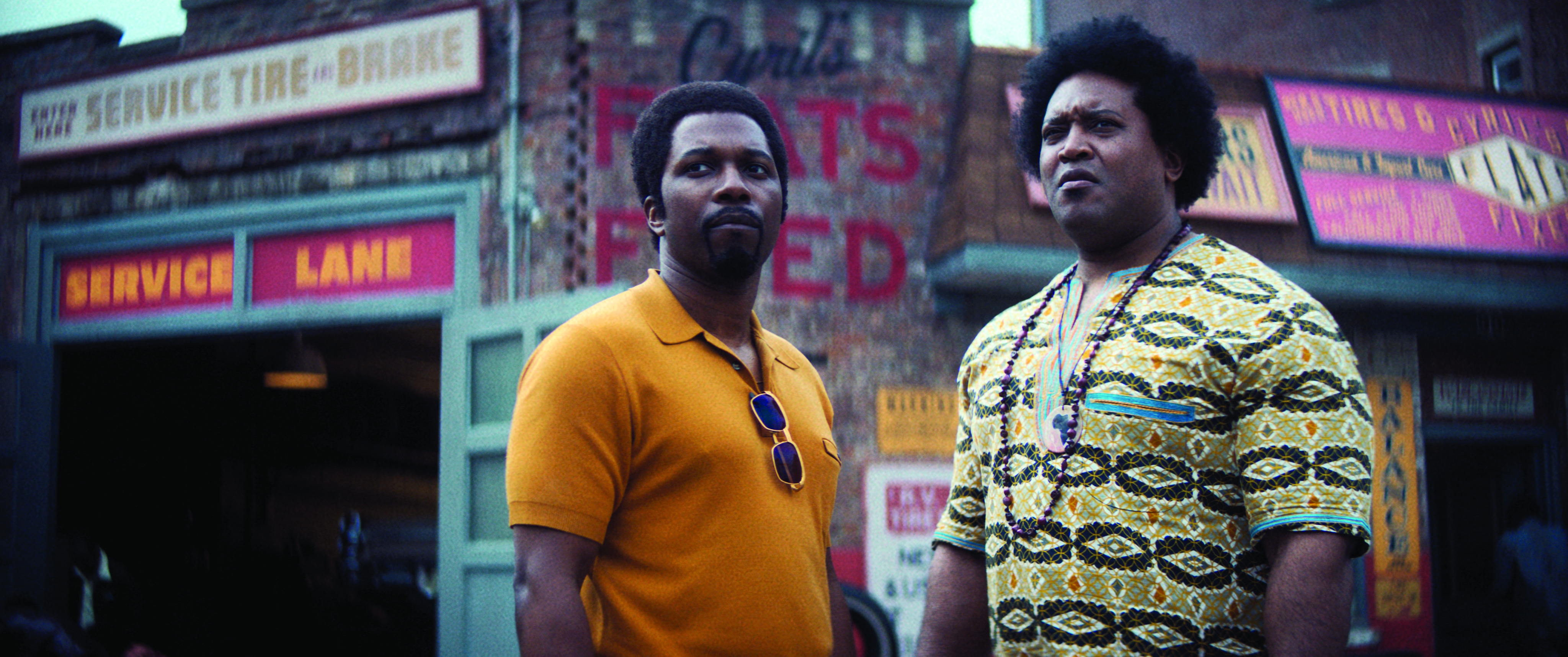
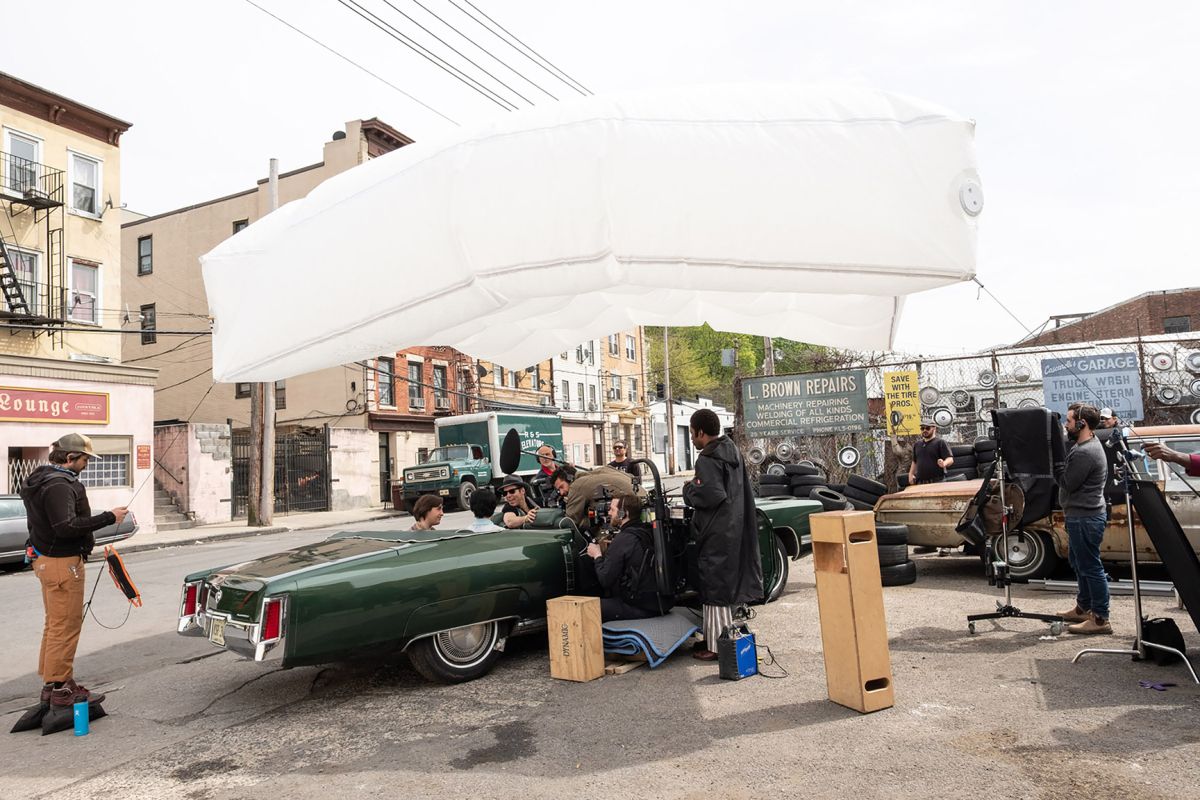
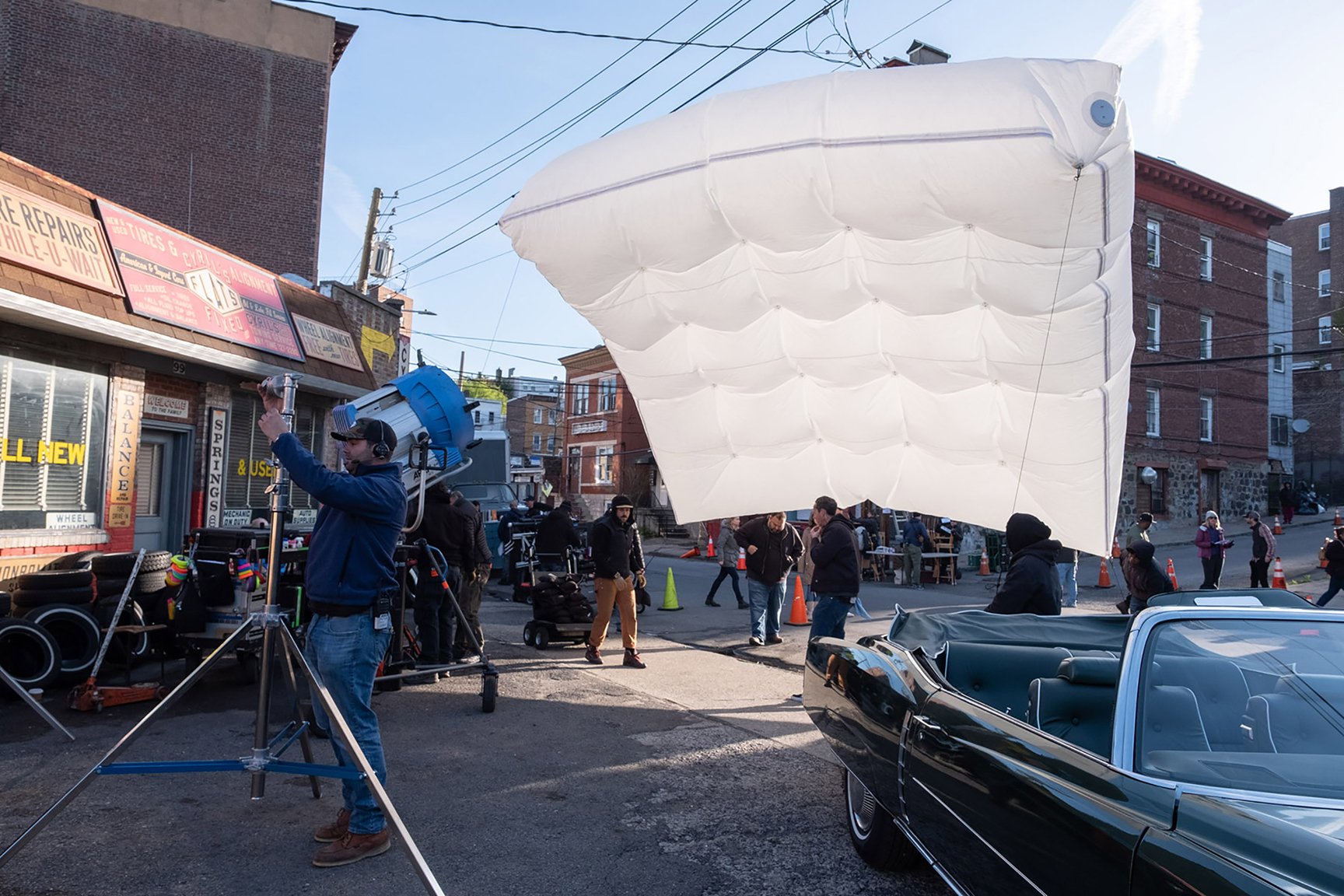
Incorporated into the narrative are the city’s July 1967 riots. During one extended sequence, the camera follows Dickie driving his car through the chaos, and then backing out in a rush. Chase compares the feel of the sequence to that of some footage that was shared with him during postproduction: period news reports about the bombing of Hanoi. He cites one particularly “terrific” shot from the riot sequence, in which Dickie “looks down a side street, and way down at the end of the street are figures — a distant group of people — and something burning.” War by another name had come to Newark.
For Chase, the appeal of seeing the TV show’s prequel in full-cinema form can be summed up in the fundamentals: “You know, 20-foot close-ups! Keeping it wide. Enough of that so [the drama is] instantly believable and stirring.”
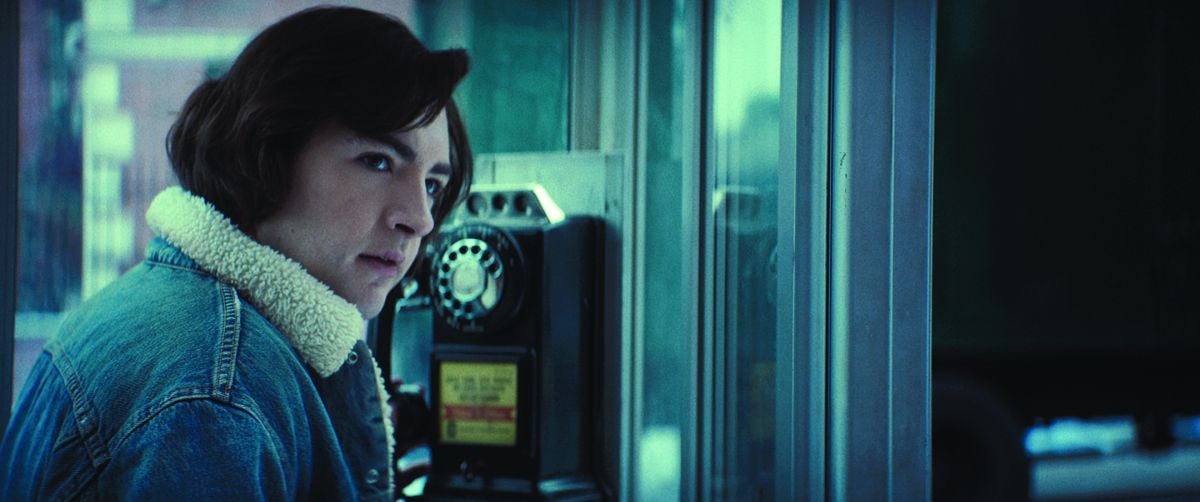
Morgenthau studied film at the University of Rochester and took photography classes at the Rochester Institute of Technology. In the early 1990s, he moved to New York City, where he worked on small non-union films as an electrician and grip. “The only way I knew how to come up in the industry was by stumbling through a side door,” he jokes.
The first feature Morgenthau shot on 35mm film was the 1997 drama Dogtown — a key gig where the cinematographer made solid connections with director George Hickenlooper (who subsequently hired him to shoot the 1999 feature The Big Brass Ring, The Man From Elysian Fields and the 2003 documentary Mayor of the Sunset Strip) and actor and future director Jon Favreau (who later tapped Morgenthau to shoot the 2014 comedy-drama Chef). Other stimulating projects included The Woman Chaser, a black-and-white adaptation of the Charles Willeford novel; Robert Benton’s Feast of Love; and Gregory Hoblit’s Fracture. But as Morgenthau notes, “Eventually, those kinds of films — mid-budget, thoughtful studio dramas for grownups — weren’t being made as frequently, so I started following the material into television.”
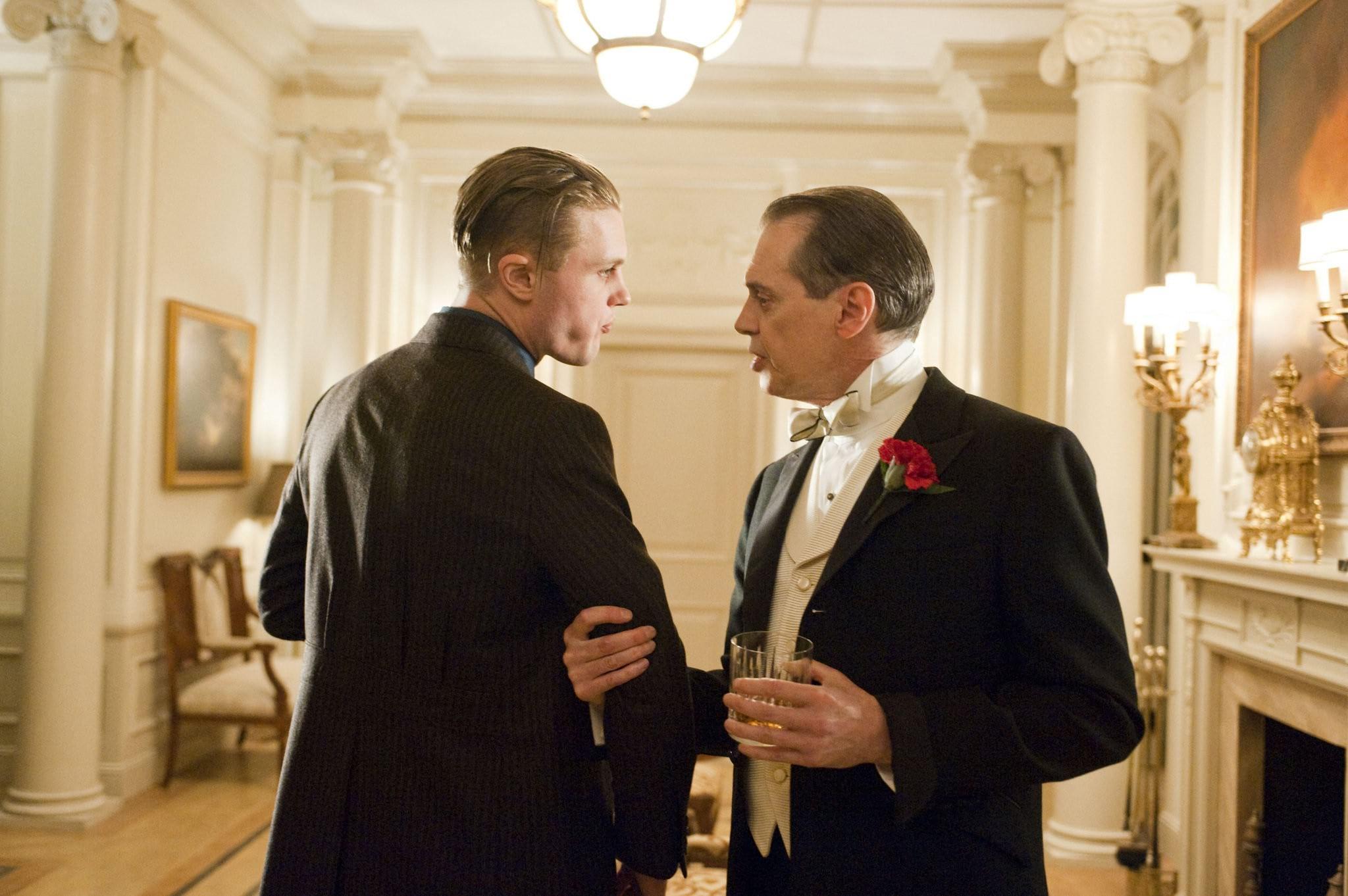
Boardwalk Empire and Game of Thrones schooled Morgenthau in shooting elaborately conceived period and fantasy set-pieces. “In television, you have to work much faster and use broader brushstrokes,” he says. “That really polishes your chops, because you have to take a scene and break it down on the spot, forward and backward.” While proud of the full scope of his work on Boardwalk, Morgenthau cites the episode “A Return to Normalcy” (which earned him a 2011 Emmy nomination) as a personal standout. Game of Thrones followed, marking Morgenthau’s first time shooting a major production entirely digitally. The cinematographer says his approach to the grand interiors of Casterly Rock, the House of Lannister’s power base, was inspired by churches he had visited and paintings by Caravaggio. “In order to make a fantasy world, I have to go back to the real world,” he submits. “Fantasy is based on what we know.”
His experience on epic television series effectively-prepared Morgenthau to shoot major-budget movies. “Doing that kind of big storytelling laid the groundwork for working on something like Thor: The Dark World,” he says, noting that projects like Thor and Terminator Genisys demand smooth collaborative workflows with visual-effects teams. But Morgenthau kept returning to more grounded dramas with the Creed sequel, a J.D. Salinger biopic (Rebel in the Rye), HBO’s remake of Fahrenheit 451, and the Netflix adaptation of the Broadway show American Son.
Musical Inspirations
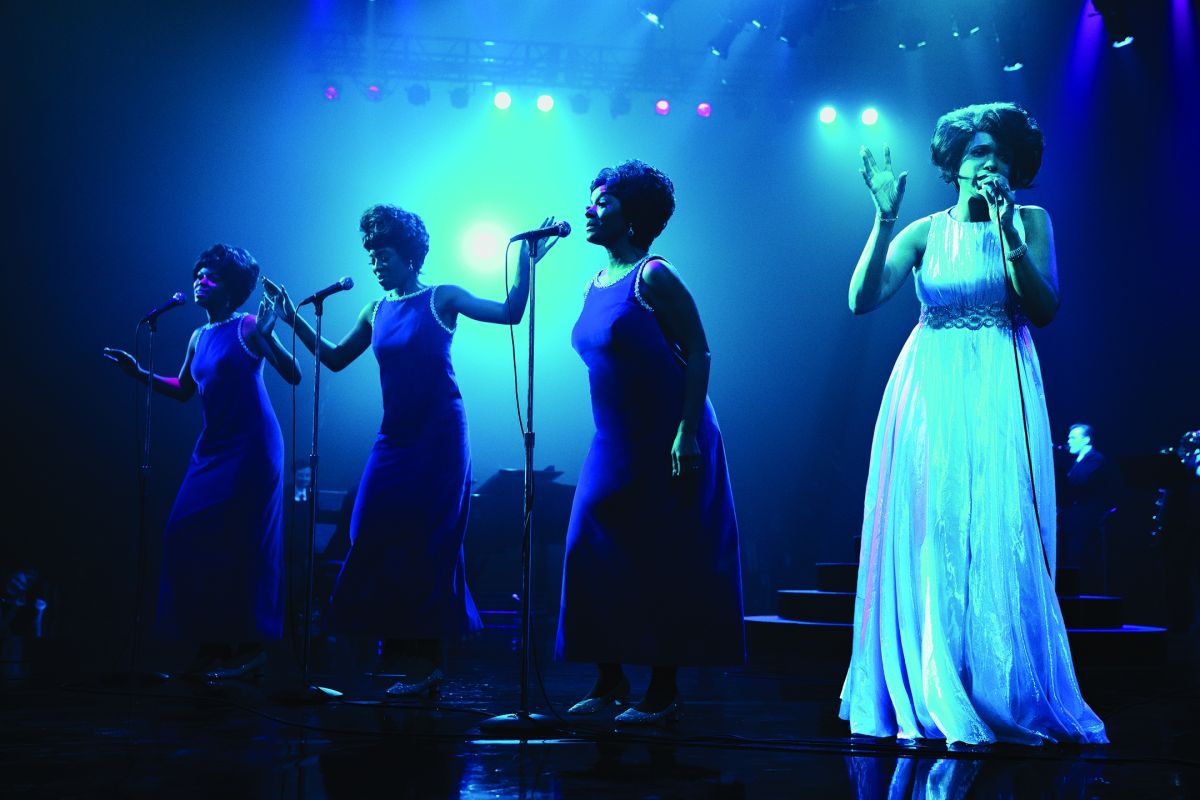
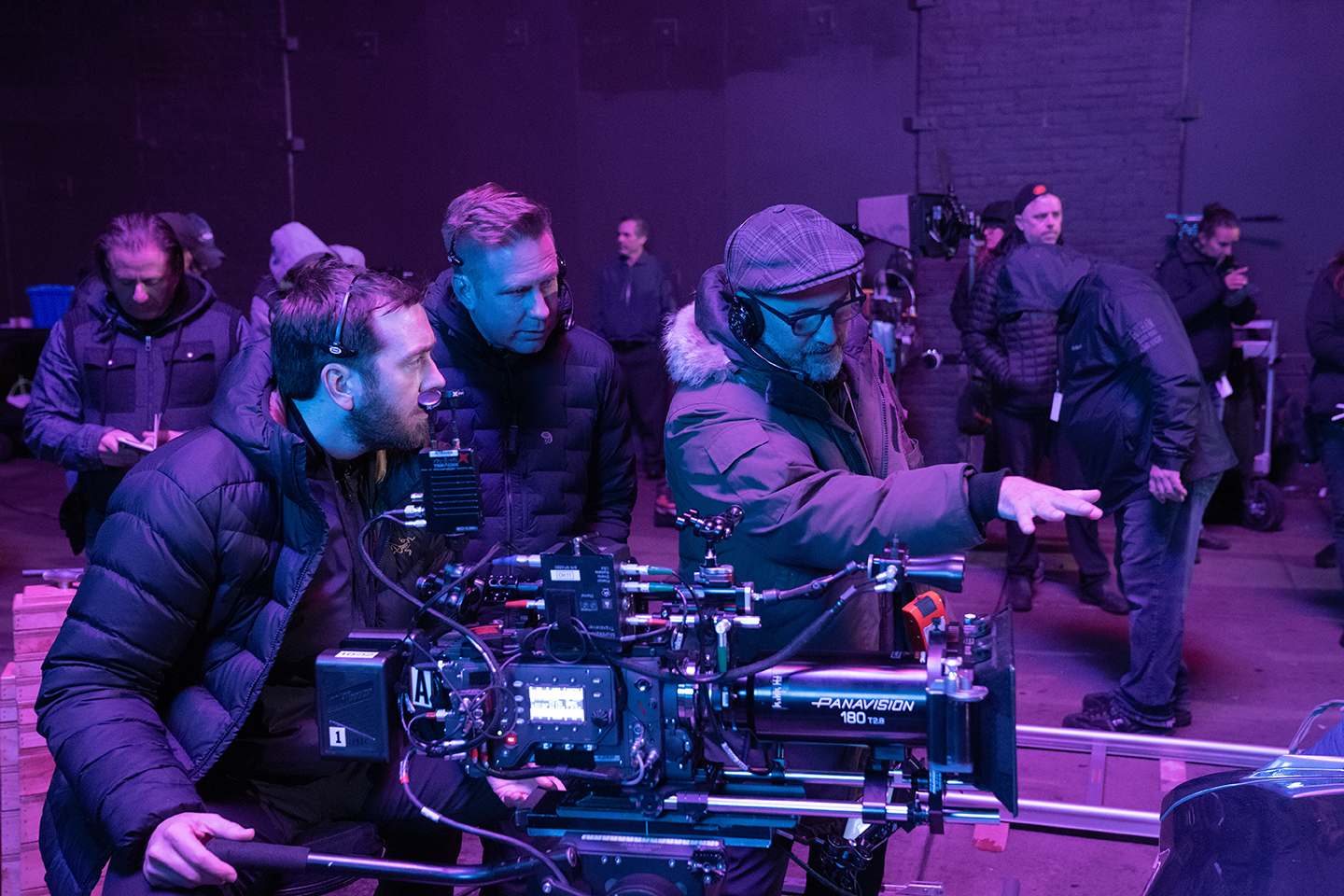
One might observe that Morgenthau’s work on Respect combined some of the elements apparent in his prior efforts: Aretha Franklin’s musical powers are certainly epic, and her heart-wrenching personal life yields indelible drama. Starring Jennifer Hudson as Franklin, the biopic tracks Aretha’s rise from precociously talented daughter of a famous minister (played by Forest Whitaker) to globally renowned star. The history includes a traumatic childhood (Franklin became a mother at age 12) and the passionate but volatile relationship she experienced with her first husband and manager, Ted White (Marlon Wayans). “Music has always been a part of my life,” says Morgenthau, who has played the guitar since the age of 15. “I have a deep love and appreciation for R&B and soul, so it was a dream experience for me to be able to shoot a movie about that music.”
“I knew I needed to have a DP who deeply understood rhythm and musicality because I come from a musical-theater background.”
— director Liesl Tommy
Director Liesl Tommy says this particular sensitivity made Morgenthau the ideal cinematographer for her debut feature. “What really stood out to me was the way Kramer and I were able to talk about music,” she says. “I knew I needed to have a DP who deeply understood rhythm and musicality because I come from a musical-theater background.”
Respect is punctuated with scenes depicting recording sessions and concert performances, which illustrate Franklin’s creative process, provide insights into her musical collaborations, and reveal key moments as the singer begins realizing her full potential. One such sequence details the recording of Franklin’s first hit, “I Never Loved a Man,” as Aretha and the musicians work out the riffs, tone and bass line. “I lit it in a way that allowed the camera to float around ‘musically’ in 360 degrees,” says Morgenthau, who recalled lessons he’d learned while filming Small Wonders, Allan Miller’s 1995 documentary about a violin teacher who instructs underprivileged children in East Harlem. “Allan always wanted to have a camera moving with the music, even on a documentary,” he says, describing the camerawork in Respect as being “like a dancer that’s dancing to the songs Aretha’s singing: flying and floating like a butterfly, either on a crane or on a Steadicam.” He credits the Steadicam operator Heathcote for helping to achieve that feeling.

Both Morgenthau and Tommy single out another scene, in which the camera circles a young Franklin (played by Skye Dakota Turner) as she sings, and then transitions seamlessly into a shot of the adult Aretha (played by Hudson). Morgenthau notes that Hudson’s vocal performances were shot live for most of the movie. “When you’re in the room with her as she’s singing, it just gives you chills,” he says.
Generally, Tommy and Morgenthau envisioned a structure for the film that contrasts the formality of Franklin’s upbringing in her father’s house, in 1950s Detroit, with her life in 1960s New York, where she finds her voice. As Tommy describes this arc, Aretha is moving from “something a little bit fragile and psychological [to] something really free.”

Throughout the shoot, Tommy and Morgenthau worked to portray the people on screen in all their beauty. “I really wanted the Black audience to feel loved and seen and valued,” Tommy says, “and there was really an emotionality to the way Kramer lit the actors that is profound to me. I’m so profoundly moved with how beautiful [and how soulful] he made them — they glow, you know? — which is what I wanted.”
Morgenthau’s versatility may reflect his eclectic exposure to the arts while growing up in Cambridge, Massachusetts. He remembers his father, a producer at the local television station WGBH, taking him to see big Hollywood movies like Rocky, but also edgy fare like The Harder They Come. That kind of range has served him well, and Morgenthau seems energized by working on the big-budget, Christmas-themed Spirited. “It’s like a huge musical from the Golden Age of Hollywood, updated and mashed up,” he says. “It’s so different than anything I’ve done — and it’s a lot of fun.”
Morgenthau (and director Liesl Tommy) recently spoke to interviewer Tommy Maddox-Upshaw, ASC about his experience in shooting Respect as part of our Clubhouse Conversations discussion series:






